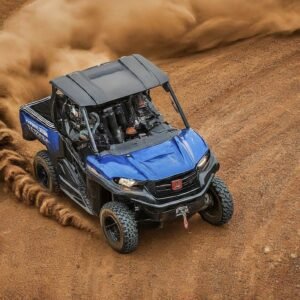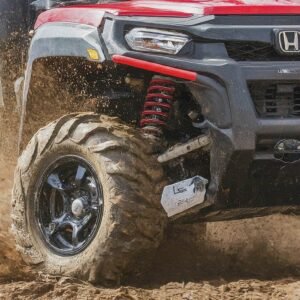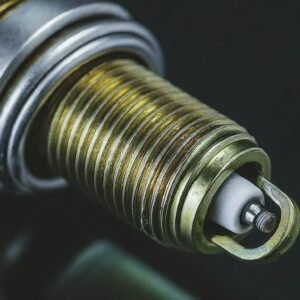The Honda Pioneer 700 is a popular side-by-side utility vehicle known for its versatility and performance. Many people are curious about its top speed and how fast it can go. In this article, we will explore the top speed of the Honda Pioneer 700 and provide you with all the information you need.
Top Speed of the Honda Pioneer 700

The Honda Pioneer 700 is equipped with a powerful engine that allows it to reach impressive speeds. On average, the Honda Pioneer 700 has a top speed of around 45 miles per hour (72 kilometers per hour). However, it’s important to note that the top speed may vary depending on various factors such as terrain, payload, and weather conditions.
While 45 miles per hour may not seem extremely fast compared to some other vehicles, it is important to remember that the Honda Pioneer 700 is primarily designed for off-road use and utility purposes. Its focus is on providing a smooth and comfortable ride, as well as the ability to tackle various terrains and carry heavy loads.
Factors Affecting Speed

As mentioned earlier, several factors can affect the speed of the Honda Pioneer 700. These factors include:
1. Terrain:
The type of terrain you are driving on can have a significant impact on the vehicle’s speed. Rough and uneven terrains can slow down the Honda Pioneer 700, while smooth and flat surfaces can allow it to reach its maximum speed more easily.
2. Payload:
The weight of the payload you are carrying can also affect the vehicle’s speed. The Honda Pioneer 700 has a maximum payload capacity of 1000 pounds, and carrying a heavy load can cause a decrease in speed.
3. Weather Conditions:
Weather conditions such as strong winds or slippery surfaces can affect the vehicle’s handling and speed. It is important to take into account the weather conditions before pushing the Honda Pioneer 700 to its limits.
Safety Considerations
While the Honda Pioneer 700 is capable of reaching high speeds, it is crucial to prioritize safety at all times. Here are some things to remember for safety:
1. Follow Local Laws and Regulations:
Always adhere to the local laws and regulations regarding off-road vehicles. Observe speed limits and any restrictions that may be in place.
2. Wear Safety Gear:
When operating the Honda Pioneer 700, it is essential to wear appropriate safety gear such as helmets, goggles, and protective clothing. This will help protect you in case of any accidents or unforeseen circumstances.
3. Drive Responsibly:
Be mindful of your surroundings and drive responsibly. Avoid reckless behavior and maintain control of the vehicle at all times. Remember that the Honda Pioneer 700 is not a racing vehicle, it is designed for utility purposes.
Honda Pioneer 700 top speed without limiter
The exact top speed of a Honda Pioneer 700 without a limiter is difficult to determine. There isn’t any official information from Honda, and modifications to bypass the limiter can be risky.
However, the estimated top speed without a limiter is likely around 45 mph (72 km/h). Even with a limiter bypass, it probably wouldn’t see a significant increase due to the vehicle’s design and power output.
How much horsepower does a Honda Pioneer 700 have
The Honda Pioneer 700 is equipped with a robust engine that delivers impressive power. It features a 675cc liquid-cooled, fuel-injected, OHV single-cylinder engine. This engine is known for its reliability and efficiency, ensuring a smooth and consistent performance.
Now, let’s get to the numbers. The Honda Pioneer 700 has a horsepower rating of approximately 45 horsepower. This level of power allows the Pioneer 700 to tackle challenging terrains and handle heavy loads with ease.
How many spark plugs does a Honda Pioneer 700 have

Surprisingly, the Honda Pioneer 700 only requires one spark plug. Unlike some vehicles with multiple cylinders that require multiple spark plugs, the Pioneer 700’s single-cylinder engine only needs one spark plug to ignite the fuel-air mixture and power the vehicle.
While it may seem unusual for a vehicle to have only one spark plug, it’s important to remember that the Pioneer 700 is designed for utility purposes rather than high-performance racing. The single spark plug is sufficient to provide the necessary ignition for the engine to run smoothly and efficiently.
How many quarts of oil does a Honda Pioneer 700 take
The Honda Pioneer 700 requires approximately 2.26 quarts (or 2.1 liters) of oil for an oil change. It is important to note that this is an approximate value and may vary slightly depending on the specific model year and any modifications or additions to your vehicle. To determine the exact oil capacity for your Honda Pioneer 700, it is always best to consult your owner’s manual or contact a certified Honda dealer.
When performing an oil change on your Honda Pioneer 700, it is also important to replace the oil filter. The oil filter helps to remove impurities from the oil, ensuring that it remains clean and effective. It is recommended to use a genuine Honda oil filter or a high-quality aftermarket oil filter that is compatible with your Honda Pioneer 700.
Honda Pioneer 700 Problems
Here are some problems of the Honda Pioneer 700 with their easy solutions.
1. Overheating Issues
One of the most common problems reported by Honda Pioneer 700 owners is overheating. This can be a frustrating issue, especially if you regularly use your vehicle in hot climates or for demanding tasks such as towing or hauling heavy loads.
The overheating problem is often caused by a combination of factors, including a clogged radiator, a malfunctioning thermostat, or insufficient coolant levels. To fix this problem, here are some things you can do.
- Regularly check the coolant levels and add more if needed. Be sure to use the type of coolant recommended for your vehicle.
- Inspect the radiator for any signs of blockage or debris. Clean or replace the radiator if needed.
- Check the thermostat to make sure it’s working right. If it’s broken, put in a new one.
- Consider installing an aftermarket radiator fan or upgrading the existing one to improve cooling performance.
- Ensure proper airflow to the radiator by removing any obstructions or debris from the front grille.
By following these steps, you can help prevent overheating issues and keep your Honda Pioneer 700 running smoothly, even in challenging conditions.
2. Transmission Problems
Another common problem that Honda Pioneer 700 owners may encounter is transmission-related issues. Some owners have reported difficulties shifting gears or experiencing jerky movements while driving.
There are a few potential causes for these transmission problems, including low transmission fluid levels, a worn-out clutch, or a faulty shift mechanism. Here are some steps you can take to address these issues:
- Check the transmission fluid levels regularly and top up if necessary. Use the recommended transmission fluid for your vehicle.
- If you notice any leaks, have them repaired promptly to prevent further damage to the transmission.
- Inspect the clutch for signs of wear or damage. If necessary, replace the clutch with a new one.
- Test the shift mechanism to ensure it is functioning correctly. If it is faulty, have it repaired or replaced.
- Consider having the transmission professionally inspected and serviced to identify any underlying issues.
Also, explore Honda Pioneer 1000 problems
Conclusion
The Honda Pioneer 700 is a capable and reliable side-by-side utility vehicle. While its top speed may not be as high as some other vehicles, it offers excellent performance for off-road adventures and utility tasks. Remember to prioritize safety and drive responsibly when operating the Honda Pioneer 700.

